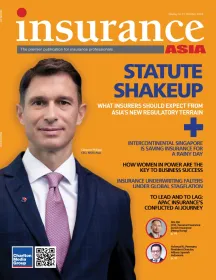
How eased C-ROSS Phase II pressures helped China's smaller insurers
Despite a decline to 207% in 2022, core solvency ratio remained stable in 2023.
China’s non-life insurance segment should maintain a stable outlook, supported by favourable regulations and a positive cost of capital environment, allowing insurers to raise funds from the debt market, according to AM Best.
Policy changes have also enhanced insurance awareness and promoted product development, particularly in the health insurance segment.
The outlook for electric vehicle insurance adoption remains strong, driven by collaborations between insurers and manufacturers.
However, China’s subdued economic momentum, impacted by a real estate slump, presents challenges. A prolonged economic slowdown could dampen consumer demand, affecting insurance uptake.
The China Risk-Oriented Solvency System (C-ROSS) Phase II, implemented in January 2022, has placed pressure on non-life insurers' solvency ratios due to increased capital requirements.
Despite a decline from 261% to 207% in 2022, the core solvency ratio remained stable in 2023 and the first half of 2024. In September 2023, regulators eased C-ROSS requirements, providing solvency capital discounts and lower risk factors for qualifying investment assets, particularly benefiting small to medium-sized insurers.
Large insurers have successfully raised capital through the domestic debt market, issuing capital supplementary bonds amid lower financing costs and declining interest rates.
Additionally, regulators have expanded funding options, allowing insurers to issue perpetual debt, recognized as core Tier 2 capital, enhancing the core solvency ratio. AM Best expects this move to boost investor confidence as China’s capital markets expand.
China's economic outlook remains a concern, with the IMF projecting that the government’s 5% growth target will not be met by 2029.
Whilst exports continue to support growth, consumer demand is constrained by the ongoing real estate downturn and a high savings rate exceeding 40% of GDP.
The People’s Bank of China (PBoC) has responded cautiously, lowering the loan prime rate by small increments, and inflation is projected to average 1% in 2024.
Non-life insurers have diversified their portfolios by expanding into non-motor lines, with increased demand for liability insurance driven by greater public awareness of legal matters.
However, a prolonged economic slowdown could affect demand for products tied to economic growth, such as motor, property, and engineering insurance. Many insurers have scaled back their credit insurance business due to deteriorating business conditions and regulatory changes.



















 Advertise
Advertise


